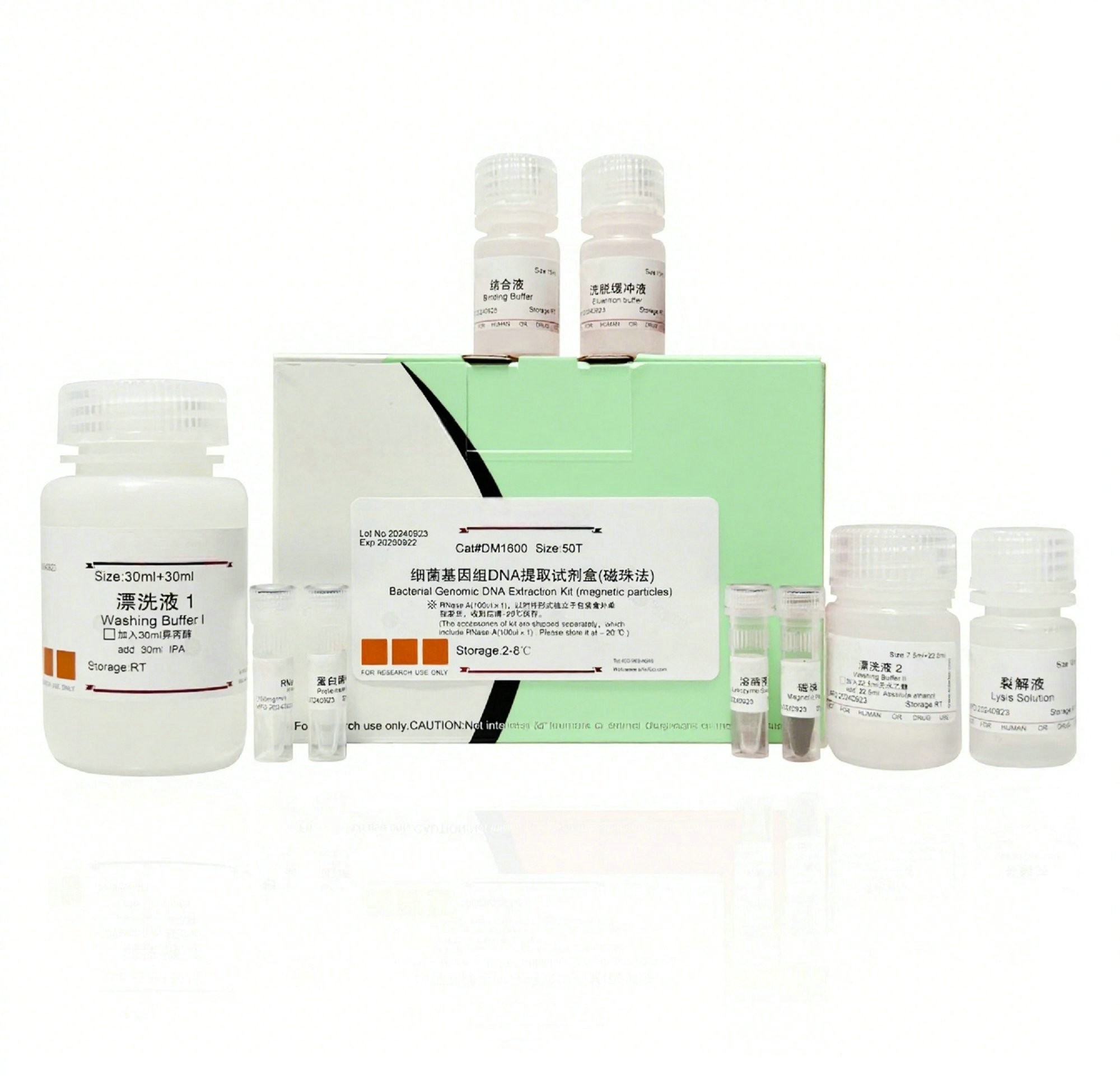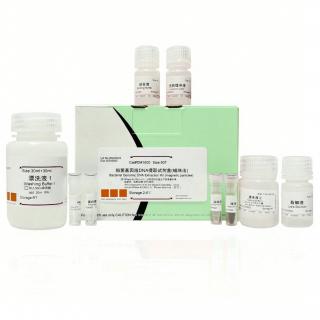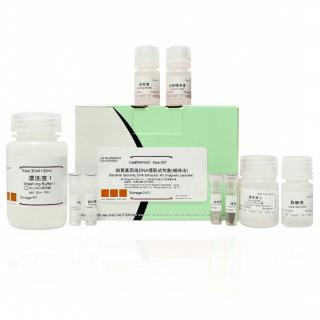Osteogenic Inducible Small Molecule Compound Kit-1(Powder,With Alizarin Red S And CPC) KOIN-1
Name:Osteogenic Inducible Small Molecule Compound Kit-1(Powder,With Alizarin Red S And CPC)
Specification:1 Kit
Storage conditions:Store at -20℃,1 year.
Shipping conditions:Freeze transportation
Product Introduction
This product does not provide dexamethasone. Customers need to bring their own or choose to use a reagent- differentiation inducer instead.
| Item number | Trade name | Components |
| KOIN-1 | Osteogenesis-inducing small molecule compound Kit-1 (dry powder type, containing alizarin red and CPC) | Reagent 1 100000× Differentiation Inducer 20 μL Reagent 2 Vitamin C 10mg Reagent 3 sodium β-glycerophosphate 500mg Reagent 4 Alizarin Red Standard 10mg Reagent 6 cetylpyridinium chloride 1g |
| KOIN-2 | Osteogenesis-inducing small molecule compound Kit-2 (dry powder type, does not contain alizarin red and CPC) | Reagent 1 100000× Differentiation Inducer 20 μL Reagent 2 Vitamin C 10mg Reagent 3 sodium β-glycerophosphate 500mg |
| KOIN-3 | Osteogenesis-inducing small molecule compound Kit-3 (dry powder type, containing ready-to-use alizarin red stain) | Reagent 100000× Differentiation Inducer 20 μL Reagent 2 Vitamin C 10mg Reagent 3 sodium β-glycerophosphate 500mg Reagent 4 Alizarin Red Staining Solution 10mL |
| KOIN-4 | Osteogenesis-inducing small molecule compound Kit-4 (dry powder type, containing ready-to-use alizarin red dye and 10% CPC) | Reagent 100000× Differentiation Inducer 20 μL Reagent 2 Vitamin C 10mg Reagent 3 sodium β-glycerophosphate 500mg Reagent 4 Alizarin Red Standard 10mg Reagent 5 Alizarin Red Staining Solution 10mLReagent six 10%CPC 10mL |
| KOIN-5 | Osteogenesis-inducing small molecule compound Kit-5 (ready-to-use, containing alizarin red dye and 10% CPC) | Reagent 100000× Differentiation Inducer 20 μL Reagent 2 25mg/mL Vitamin C 2*300uL Reagent 3 1M sodium β-glycerophosphate 1.5mLReagent 4 Alizarin Red Standard 10mg Reagent 5 Alizarin Red Staining Solution 10mL Reagent six 10%CPC 10mL |
| KOIN-6 | Osteogenesis-inducing small molecule compound Kit-6 (ready-to-use, containing alizarin red dye) | Reagent 100000× Differentiation Inducer 20 μL Reagent 2 25mg/mL Vitamin C 2*300uL Reagent 3 1M sodium β-glycerophosphate 1.5mLReagent 4 Alizarin Red Staining Solution 10mL |
| KOIN-7 | Osteogenesis-inducing small molecule compound Kit-7 (ready-to-use, does not contain alizarin red and CPC) | Reagent 100000× Differentiation Inducer 20 μL Reagent 2 25mg/mL Vitamin C 2*300uL Reagent 3 1M sodium β-glycerophosphate 1.5mL |
Basic operations ( for reference only )
1. Inoculate cells: Take cells in the logarithmic growth phase, inoculate them into coated culture vessels at a cell density of 2×10 4 cells/cm 2 , and culture them in a 37°C, 5% CO2 culture environment until the confluence is 60-70%. Discard the supernatant and add osteogenic induction differentiation medium.
2. Cell differentiation induction: Change the osteogenic induction medium every 2-3 days, culture at 37°C, 5% CO2 culture environment, and pay attention to the changes in cell morphology (usually about 14-28 days). Based on the precipitation of calcium salts in cells and the formation of calcium nodules, the time to terminate cell induction is determined and stained for identification.
3. Cell fixation: Aspirate the culture medium and wash it once with an appropriate amount of 1×PBS. After discarding, cover the bottom of the culture vessel with an appropriate amount of 4% neutral formaldehyde solution and fix at room temperature for 30-60 min. Discard the fixative and wash twice with 1×PBS.
4. Alizarin red staining: Add an appropriate amount of alizarin red staining solution for 3~5 minutes, absorb the alizarin red staining solution, wash twice with 1×PBS, and add an appropriate amount of 1×PBS to prevent the cells from drying out.
5. Induction evaluation: Observe the osteogenic staining effect under a microscope, and perform image collection and induction evaluation. When induction is successful, the calcium nodules will appear red or orange-red when combined with alizarin red dye.
6. Semi-quantitative analysis: After microscopic observation, discard the supernatant, add cetylpyridinium chloride solution, incubate at room temperature for 15 to 60 minutes to dissolve the mineralized nodules (alizarin red), and then detect the OD value of the supernatant at 562 nm.





 sales
sales